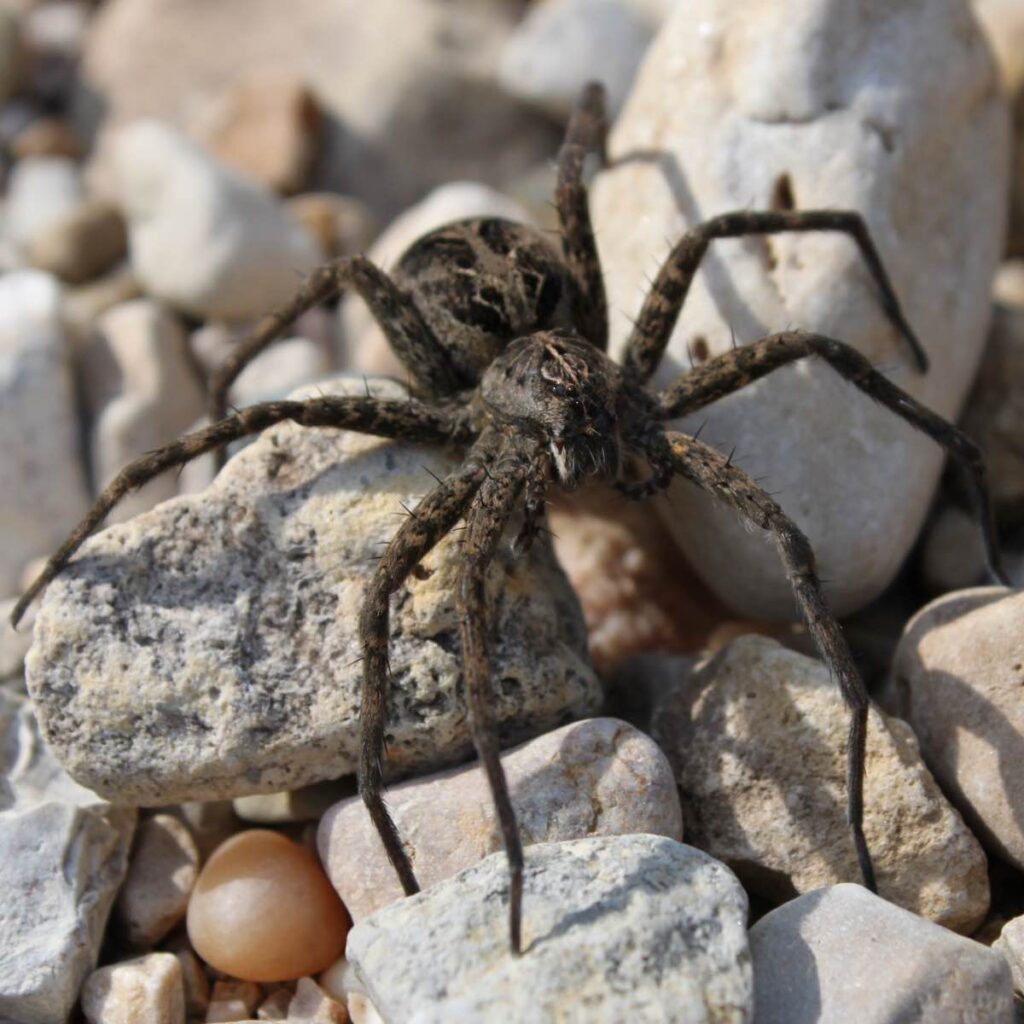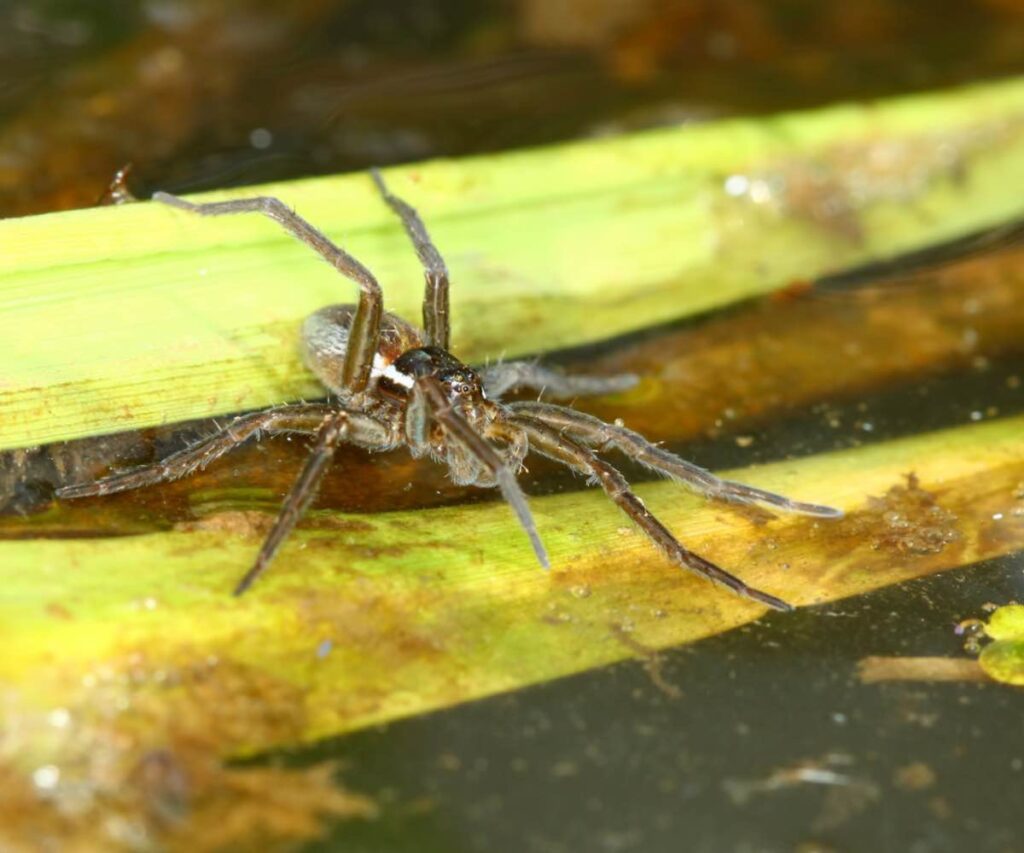Last Reviewed and Updated on February 25, 2023
These spiders are known for their unique ability to catch prey on water, which has earned them their common name. Despite their formidable appearance and impressive hunting skills, fishing spiders are largely harmless to humans. Let’s explore some fascinating facts about fishing spiders, from their physical characteristics to their behavior. Whether you are an arachnid enthusiast or simply curious about the natural world, read on to discover the fascinating world of fishing spiders.

About Fishing Spiders
Fishing spiders (Dolomedes) are a group of spiders that belong to the family Pisauridae. Their other common names are; ratf spiders, dock spiders, and wharf spiders. They are found worldwide and are commonly seen near bodies of water, such as ponds, streams, and rivers, where they prey for their food.
There are over 100 different species of fishing spiders.
Fishing spiders are among the larger of the spider species, with some species reaching sizes close to 4 inches / 10 cm in leg span (most are half this size). They have long, slender legs that allow them to move easily across the surface of the water and capture prey.
They mostly pray on mayflies and other small aquatic insects.
These spiders are similar to wolf spiders in size, shape, and color but have a distinctive eye arrangement that sets them apart. Fishing spiders are characterized by two rows of eyes with two large eyes in the top center of the face and six eyes below, something unique to this genus of spiders.
Facts About Fishing Spiders
Let’s dive into some fun facts about fishing spiders.

Love unusual animals? Check out our list of weirdest animals on the planet or our list of 100 weird animal facts.
1. All but one fishing spiders are semiaquatic
Semiaquatic animals spend most part of their time on the water and on plants that grow submerged in water.
The only known exception is the white-banded fishing spider (Dolomedes albineus), a tree-dwelling fishing spider species. Like other fishing spiders, this one tends to hunt near or in bodies of water.
2. They usually hunt their prey on the surface of the water
These spiders are covered with hair that is hydrophobic (repels water), which allows fishing spiders to stand or run on water. They usually hunt their prey as it struggles on the water’s surface. These spiders wait at the edge of the water body (pond, stream…) for their prey, and once they spot it, they run across the water to catch it.
3. For them, the water functions in a similar way as a spider web
Fishing spiders feel for vibrations in the water with their legs. These spiders, like other spiders, have specialized hairs, called trichobothria, on their legs that are sensitive to vibrations in the water. When their prey moves on the surface or in the water, it creates ripples that the spider can sense.
Spiders that use spiderwebs also detect vibration on their webs to sense prey, although they don’t always need to catch it.
4. They build spider webs as well
While they do not construct webs to catch prey, they can build shelters for themselves and do use spider webs to protect their eggs.
5. Some fishing spiders can catch fish
Insects are their main diet and the only diet for smaller species of fishing spiders. Larger species, on the other hand, can prey upon smaller fish as well. A fitting diet if you consider their name.
6. They can dive underwater
Fishing spiders are capable of diving and walking underwater. They have fine hairs on their legs that trap a layer of air around them, allowing them to have a small oxygen reserve as they go underwater.
7. They sometimes use leaves as rafts
While these spiders usually hunt from the edges of water bodies, they are known to use leaves as rafts to expand their hunting ground.
8. They feed at night
Fishing spiders primarily hunt at night as this keeps them safe from birds which are their main predators.
9. Males usually die after mating
But unlike many insects, the females don’t kill them. The males die on their own, likely from being physically and energetically depleted after mating.
10. The male-to-female ratio of fishing spiders is 3 to 1
Nature is the queen of balance. There are three males born for every female, which evens out the balance of males dying after mating,
